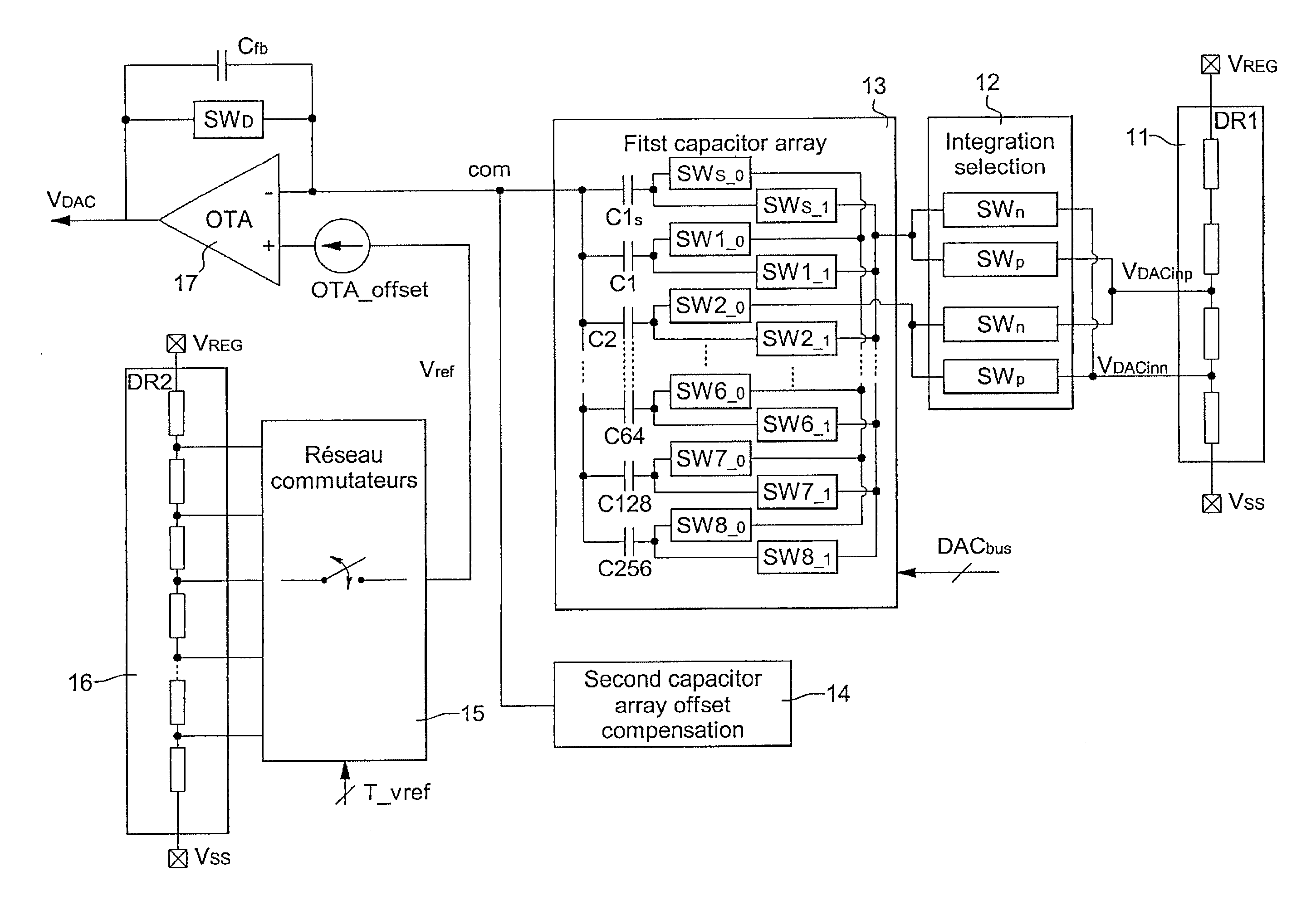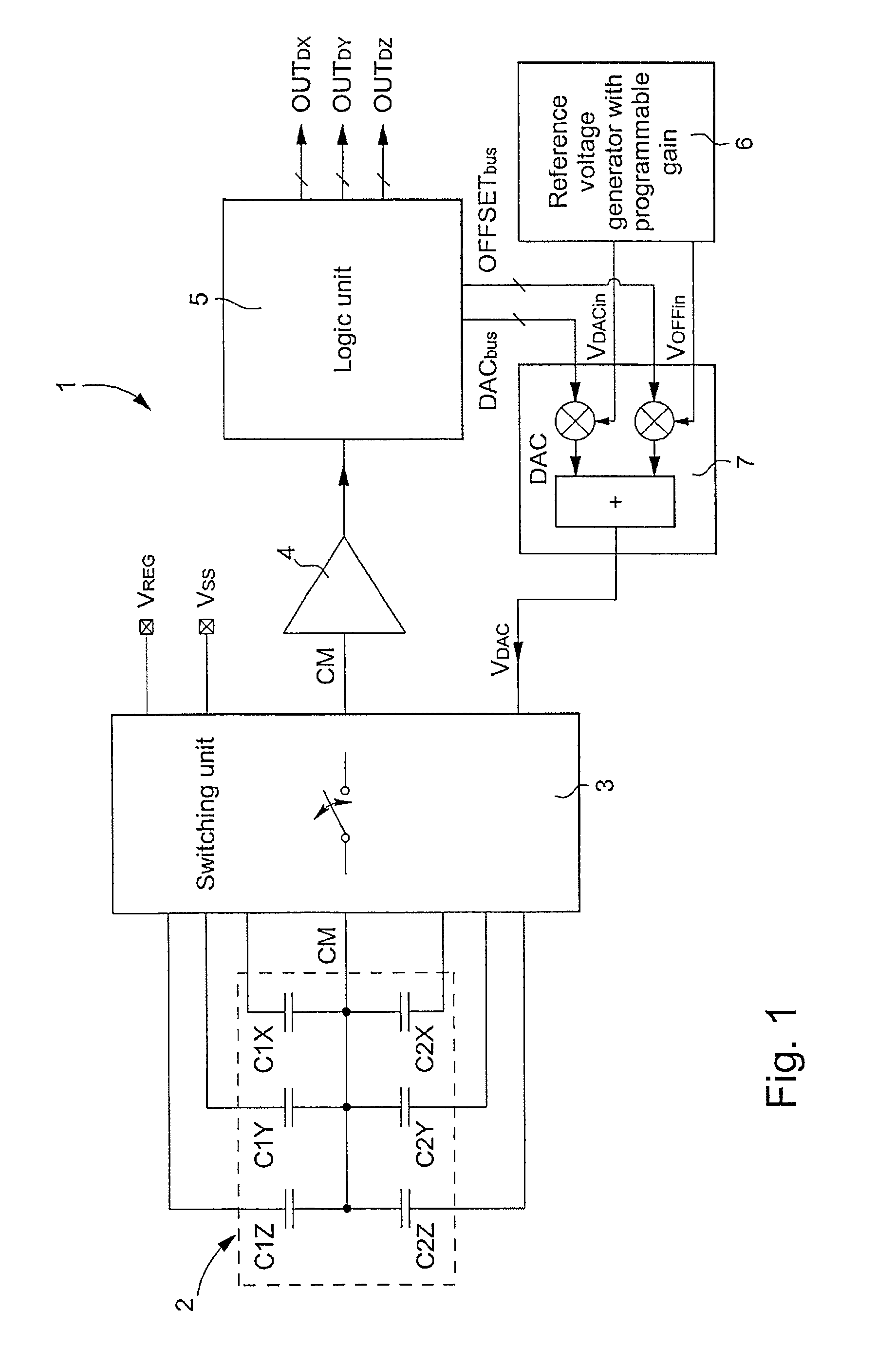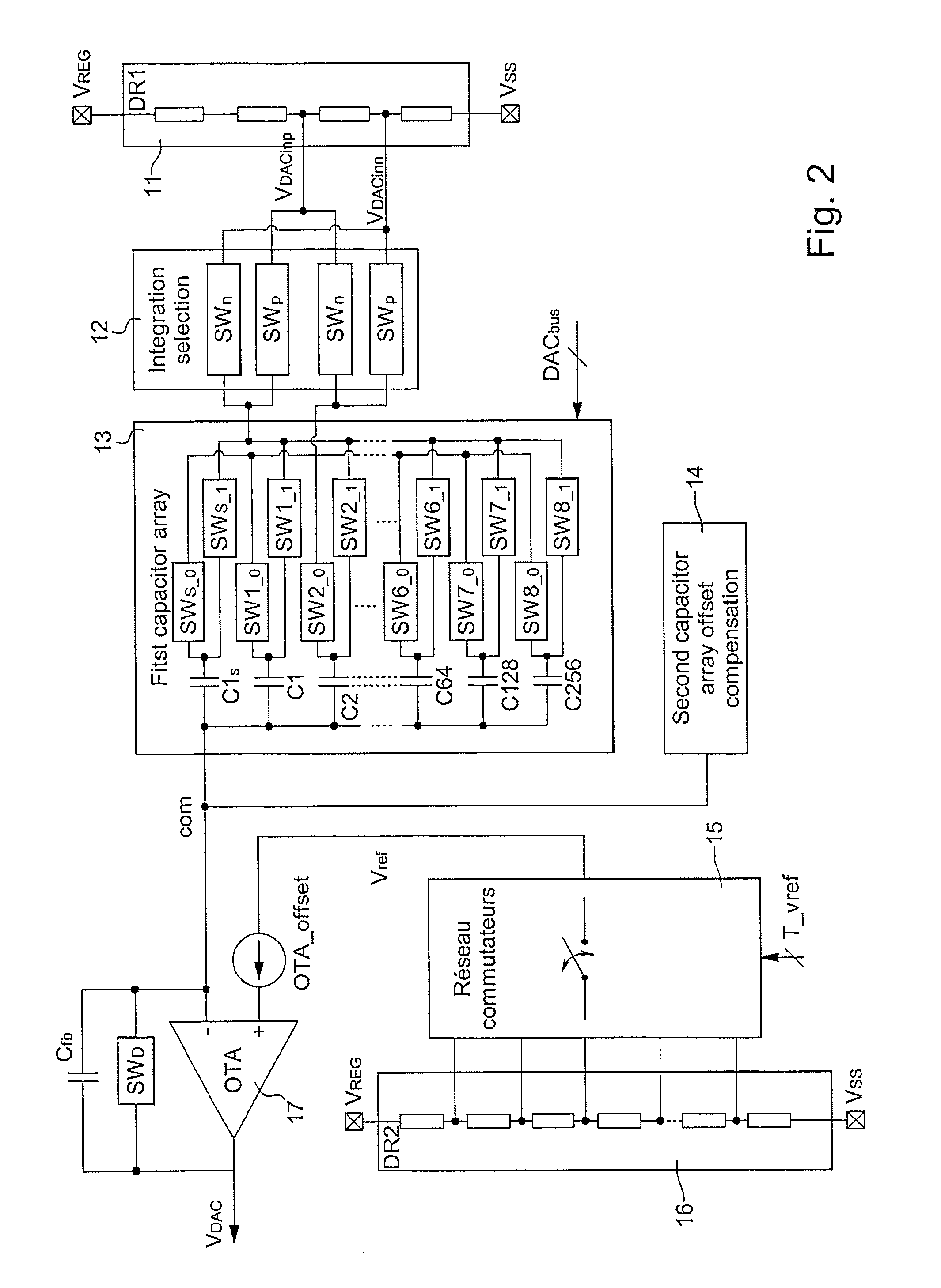Method for reducing non-linearity during measurement of a physical parameter and electronic circuit for implementing the same
- Summary
- Abstract
- Description
- Claims
- Application Information
AI Technical Summary
Benefits of technology
Problems solved by technology
Method used
Image
Examples
Embodiment Construction
[0034]Since various components of the sensor electronic interface circuit with differential capacitors are well known in this technical field, they will not all be explained in detail in the following description. Emphasis is mainly placed on the method for measuring a physical parameter by means of an electronic circuit which supplies digital measuring signals at output with a reduction in the non-linearity effect of the digital-analogue converter.
[0035]FIG. 1 shows a simplified diagram of the various components of electronic interface circuit 1 for a capacitive sensor 2 according to the invention. In this embodiment, a tri-axis capacitive MEMS sensor 2 with a single mass is connected to electronic circuit 1, although it is entirely possible to envisage connecting a tri-axis sensor with three moving masses or a single axis sensor. This capacitive sensor is thus formed of three pairs of capacitors C1X, C2X, C1Y, C2Y, C1Z and C2Z. The two capacitors of each pair are differential conn...
PUM
 Login to View More
Login to View More Abstract
Description
Claims
Application Information
 Login to View More
Login to View More - R&D
- Intellectual Property
- Life Sciences
- Materials
- Tech Scout
- Unparalleled Data Quality
- Higher Quality Content
- 60% Fewer Hallucinations
Browse by: Latest US Patents, China's latest patents, Technical Efficacy Thesaurus, Application Domain, Technology Topic, Popular Technical Reports.
© 2025 PatSnap. All rights reserved.Legal|Privacy policy|Modern Slavery Act Transparency Statement|Sitemap|About US| Contact US: help@patsnap.com



